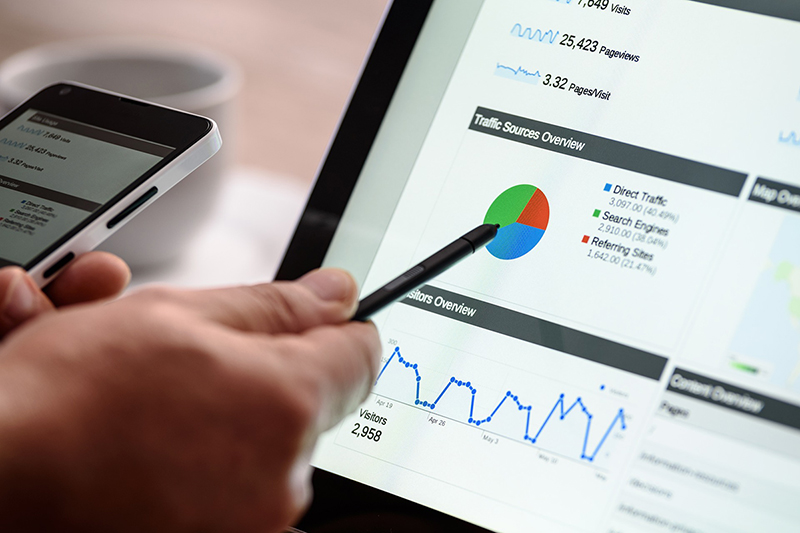
Feb
A Beginner’s Guide to Better Website Traffic
Every business that has a website needs visitors. But you do not need to be worried about the number of visitors all the time. It is not only the quantity but actually the quality of visitors that determine the profitability of your business.
You need to build a traffic that leads to the goal conversions you are looking for. It can be anything from buying a product to subscribing to your newsletter, every visitor that converts adds value to your business. Read on to find answers on how to build a better website traffic.
Know your target audience
None of your efforts will be effective unless you are clear on who your target audience is. Building a buyer’s persona is the foundation of any marketing strategy and absolutely essential for your success.
Only when you know your ideal customer, you will be able to make the right decisions on the kind of content you want to create, the platform you want to choose etc. It helps you to understand your customers better and tailor your products and services according to their specific needs.
A buyers persona is the detailed information about your target audience. It includes their demographic information, background, goals, values, challenges, hobbies, interests and common objections.
Do not create a separate persona for every slight difference and focus on the ones that contribute the most to your business.
Work on keywords/topics for quality traffic
Identifying the right keywords or topics which give you a good ROI is the next step towards increasing your website traffic. But how can you find these potential keywords?
A good way to start is by asking yourself this question: “What problems or queries do my target customers have while they are in different stages of the buyer’s journey?” You can apply a similar question to your existing customers and think about the issues they face while or after using your products or services.
Spotting the similarities or pattern will help you come up with topics that have a broader scope. Once you are ready with the list, enter your topics in the AdWords Keyword Planner tool and ensure that the target settings match the profile of your target audience.
Make a note of all the keyword or topic ideas that you find relevant and prioritise the keywords according to the highest search volume and bid price. These are the keywords that hold the highest ROI for your business.

Get your content strategy right
Before a prospect turns into a customer, they need to move through these 3 stages that govern their buying decision:
Awareness – This is the stage when people become aware of a problem and looking for solutions, opinions, education, insight and resources.
Consideration – Also known as the ‘evaluation’ stage, people in this phase are involved in evaluating your solution with that of the competitors through deep research.
Conversion – This is the stage when the prospect is ready to take the final decision and convert to a customer.
Content marketing acts as a fuel to move the customer through all these stages and you should aim to create content that is specially designed to address their needs at every stage of the buyer’s cycle.
This personalised approach will result in an increase in traffic and enhance your relationship with the customers.
Set your SEO priorities
Optimising the content for the search engines is an essential part of increasing website traffic. It is not necessary to be an SEO expert to do this. Know the basics of SEO and master the art of creating Title tags and meta description.
Title tags are important because they help the search engine in understanding the content of your page. Most importantly, it is the first impression that people get while searching something on search engines or somebody shares your post on social media. Hence, writing good title tags is the best investment you can make towards search engine optimisation and improving the user experience.
On the other hand, meta descriptions don’t directly affect the ranking on search engines, but they are an important part of the SEO strategy as it influences the decision of the user to click on the result. A good meta description can be seen as a compelling Ad under the title tag that impacts the user behaviour and improves the click-through rate.
Increase user engagement on the website
A higher engagement rate not only helps you understand the customer behaviour in a better way but also signals Google to move you up in the search engine results.
To enhance the user engagement, your website should have a good load time, professional web design, easy navigation, relevant landing pages, quality content and a compelling call-to-action. Strive to create the best user experience for your visitors.
To do this, you must measure some important metrics like CTR, bounce rate, time spent on site, return visits, the action performed and page views on Google Analytics. Monitoring these metrics on a regular basis will help you provide a rich user experience along with an increase in engagement levels.

Reach a wider audience
Marketing is all about meeting the right people at the right place and the right time. Unfortunately, there is no one place where you can target your customer. Today’s user looks for information and insights from multiple channels to evaluate your products and services.
You need to be where your customers are. Find out where they spend their maximum time online. If they are present on different social media platforms, you need to develop an effective social media strategy to reach them.
All your campaigns need to be carefully planned and coordinated so that the customers find the content meaningful and credible. It is important to understand the behaviour of your customer across different channels and create customer experiences that are consistent.
Your website is one of the most crucial tools in growing your business online. Use it well and your business revenue will thank you for it.


Sorry, the comment form is closed at this time.